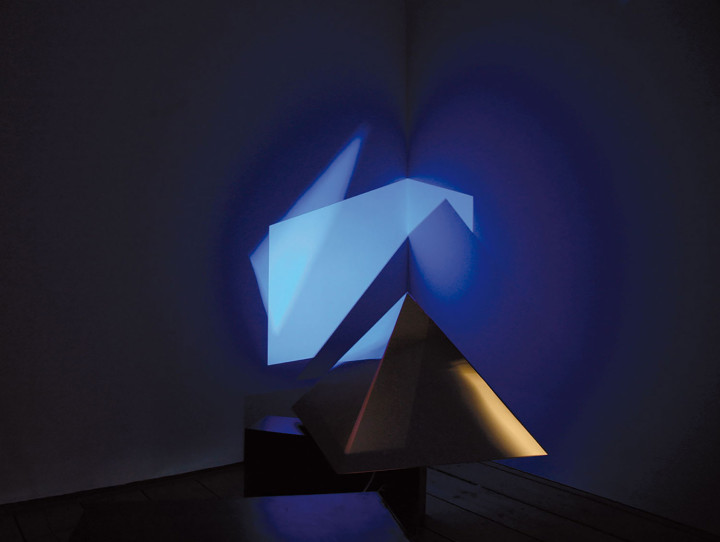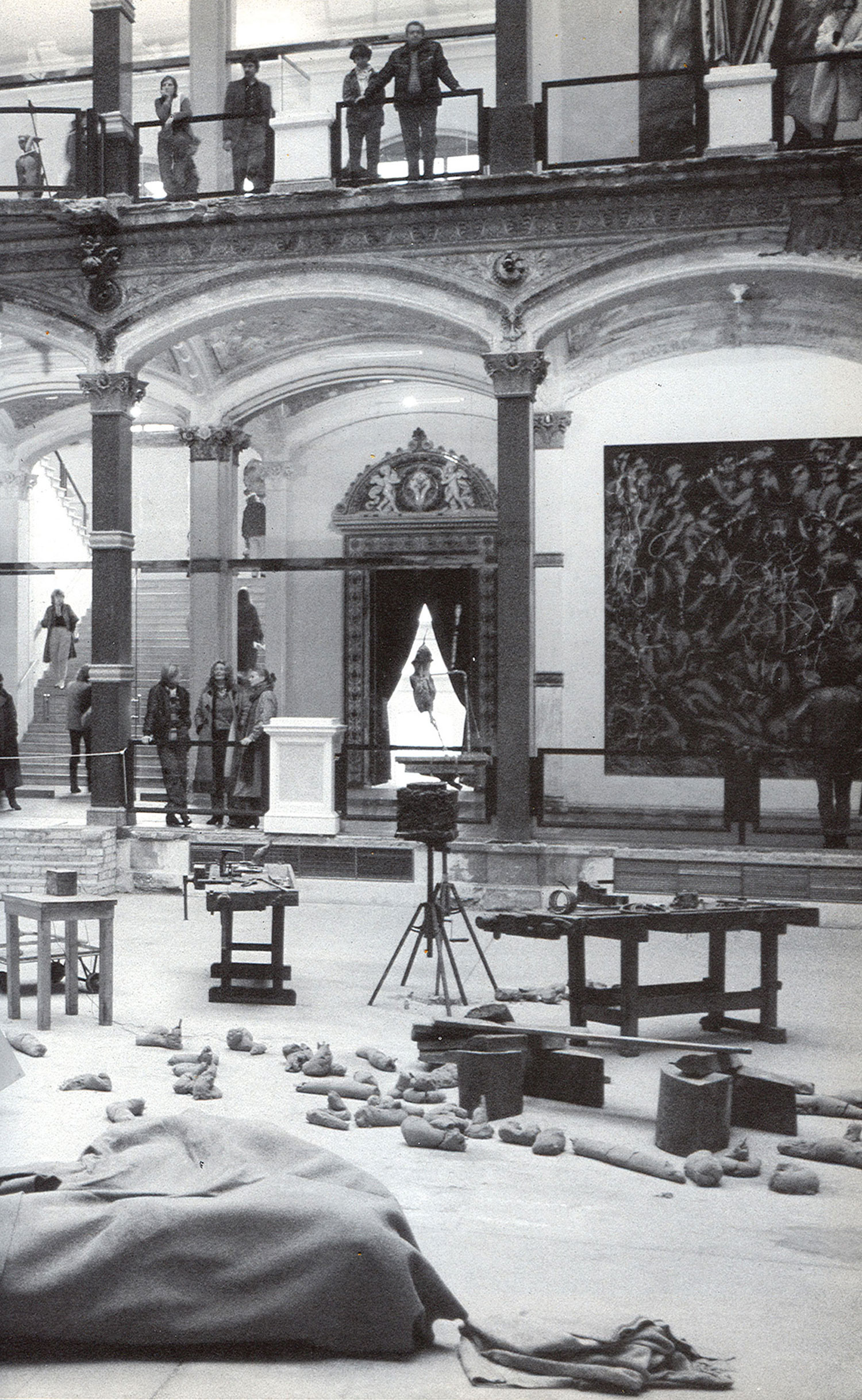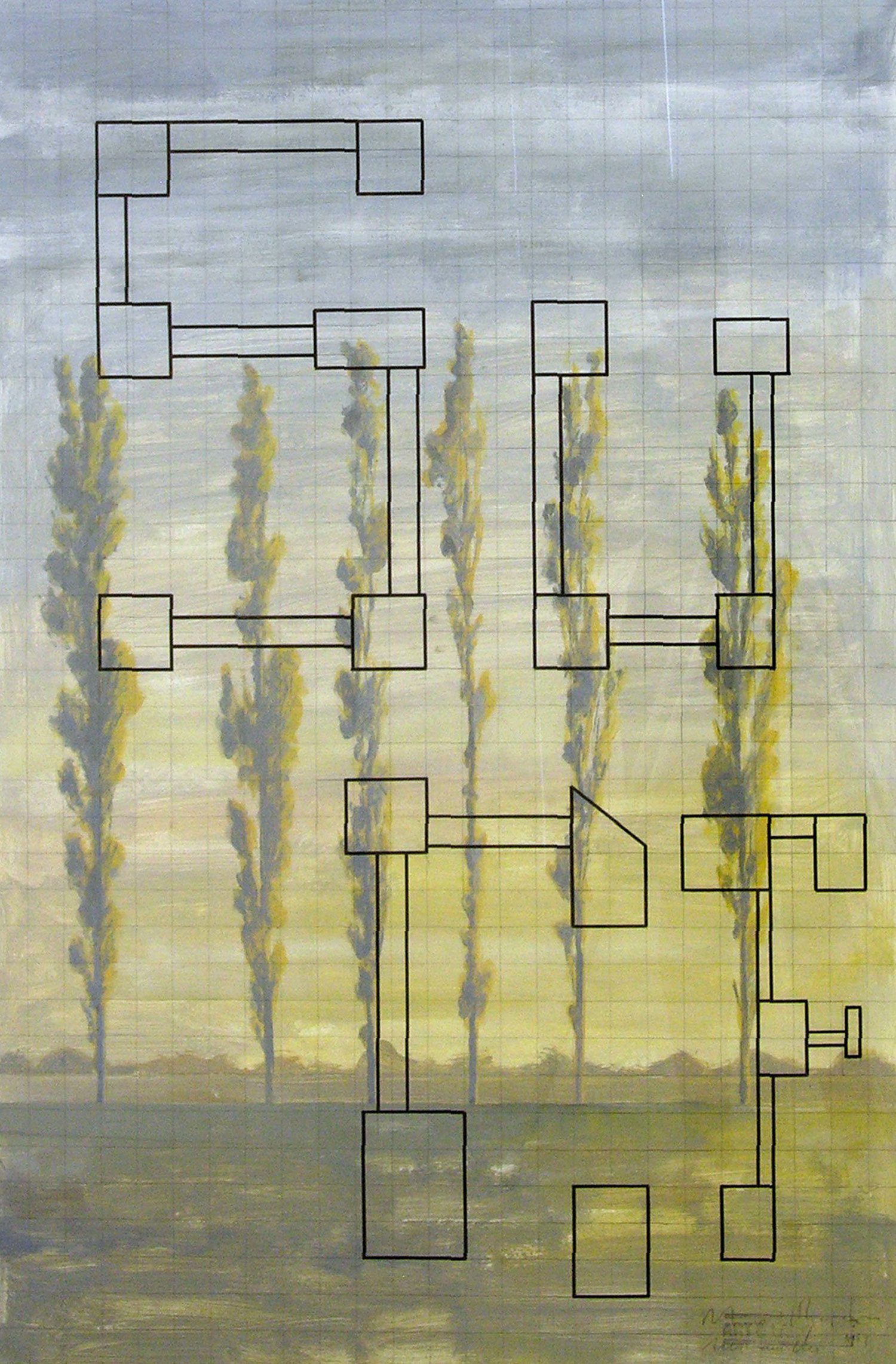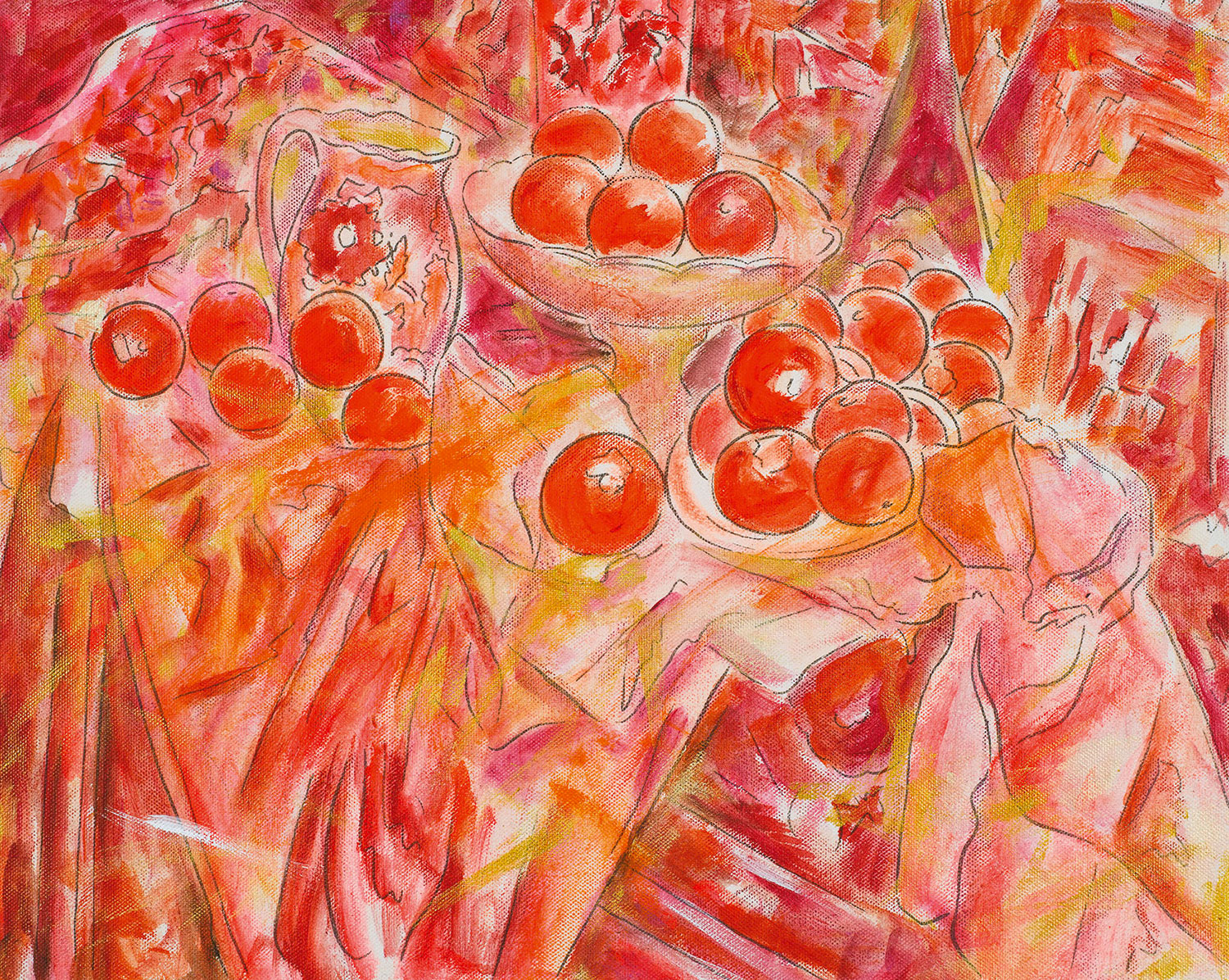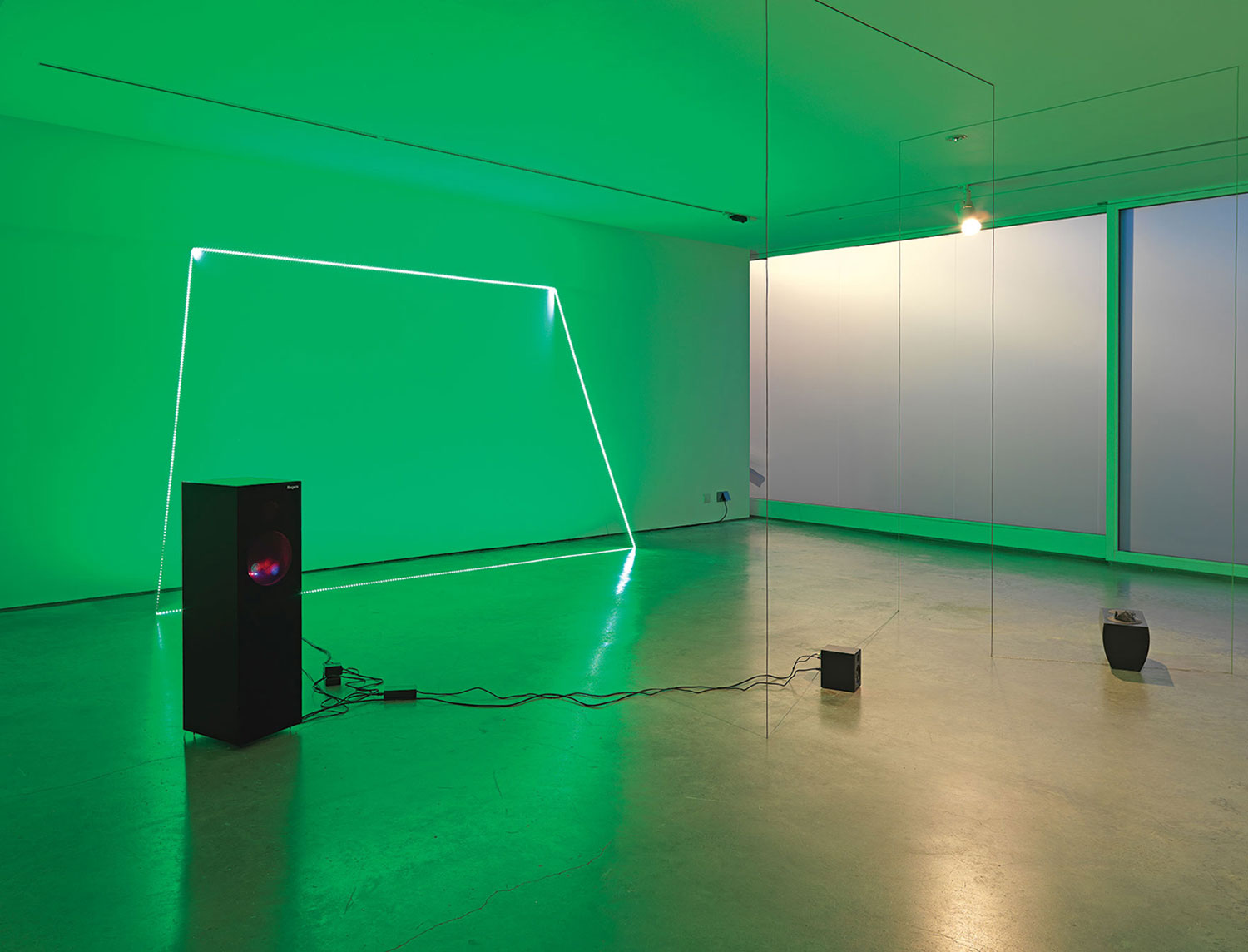
Haroon Mirza assigns sound as much if not more weight than visuals. Inspired by Marshall McLuhan, who believed that mankind’s sense of sight has been over-stimulated since the advent of literacy, the Sheffield-based artist takes a stand on art’s ocularcentric bias. In his installation Regaining a Degree of Control (2010) on display at the British Art Show, visual elements take second place, serving only to highlight or generate the sounds: a turntable spins a radio that picks up interference from a light bulb, while the repetitive rhythm of a music loop is enhanced by synchronizing it to oscillate with a strobe. The sounds, meanwhile, take center stage. Just as a painter might explore figure-ground relationships, so does Mirza seek to identify the moments when noise is perceived as sound or sound mutates into music. In The Last Tape (2010), he investigates the disjunction between sound and music, hearing and listening, by emphasizing the insistent quasi-rhythmic clicks of a tape recorder knob or the soft shuffle of hi-hat cymbals originally sampled from an aerosol insecticide spray. The sounds of other works likewise undergo rigorous constraints — turntables spin at identical speeds and musical excerpts are set to the same tempo and key. As a result, the individual installations harmonize with each other when they are exhibited together, forming a new, overarching sonic composition that permeates the entire space.

While Mirza’s works reference such historic sound sculptures as Robert Rauschenberg’s Oracle (1965), they also hark back to the earlier tradition of the Gesamtkunstwerk, which aimed to unify all the artistic disciplines. The Last Tape, a film centered around the late Ian Curtis, frontman of the seminal late ’70s post-punk band Joy Division, was shot on the set of a production of the Beckett play Krapp’s Last Tape (1958), thereby establishing a parallel between Krapp and Curtis, both of whom were obsessed with death. Mirza likewise engenders new associations by appropriating and transforming literary references: the song presented in The Last Tape alludes to William Burroughs’s story of a man who created a virus designed to turn everyone into himself — a tale that in Mirza’s film becomes an allegory for Curtis’s iconic status and the ongoing cult surrounding him. The simultaneous layering of multiple narratives is typical of Mirza’s current projects, marking a shift from his early works, which focused on generating sound from objects and exploring materials and techniques.
Mirza is likewise interested in the capacity of music to mirror the complexities of human desires and beliefs. In his installation Anthemoessa (2009) he draws a parallel between the Islamic call to prayer and the Sirens’ song, both of which imply submission to a higher power. His forthcoming show at Lisson Gallery will comprise footage of Kenyan drummers participating in an Afro-Islamic ritual whereby men fight for the right to marry a particular woman. Here, Mirza reminds us that music is an all-consuming controlling force — as powerful, if not more so, than visuals.

